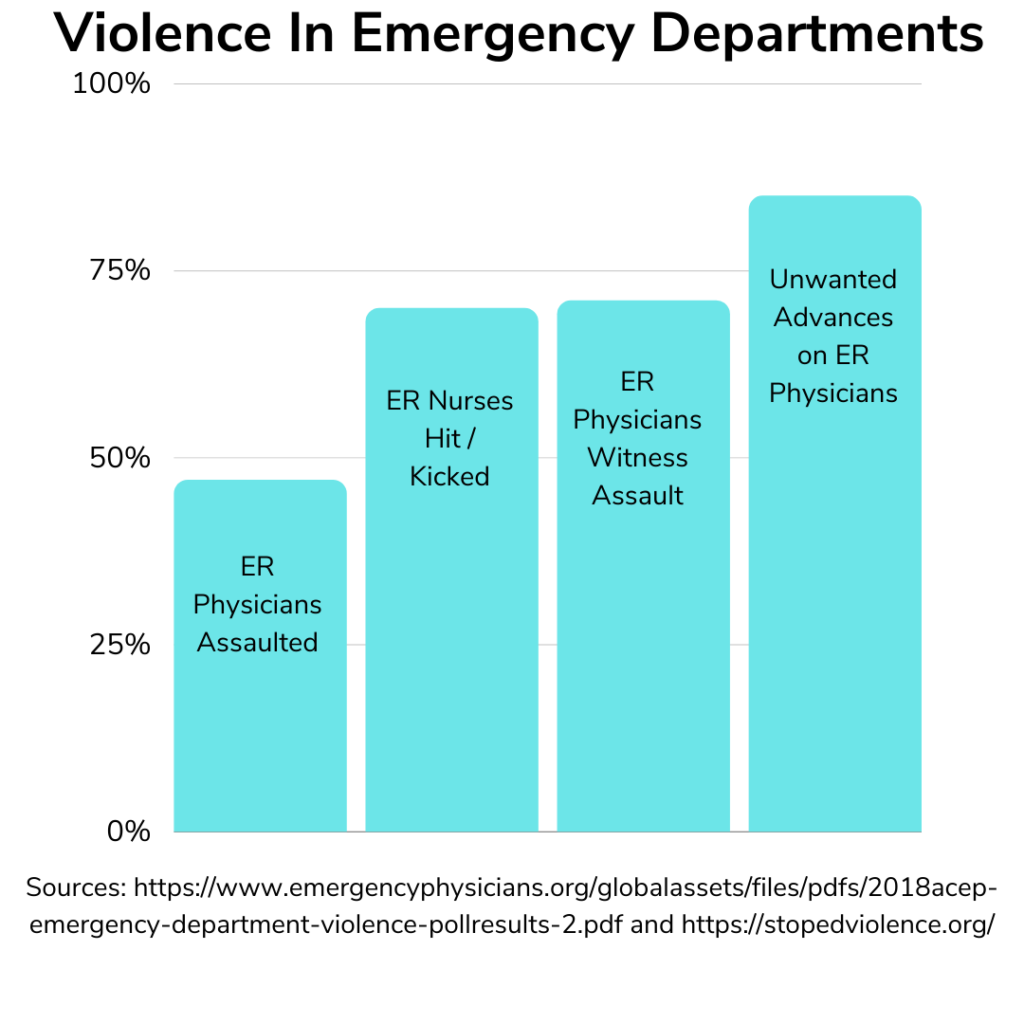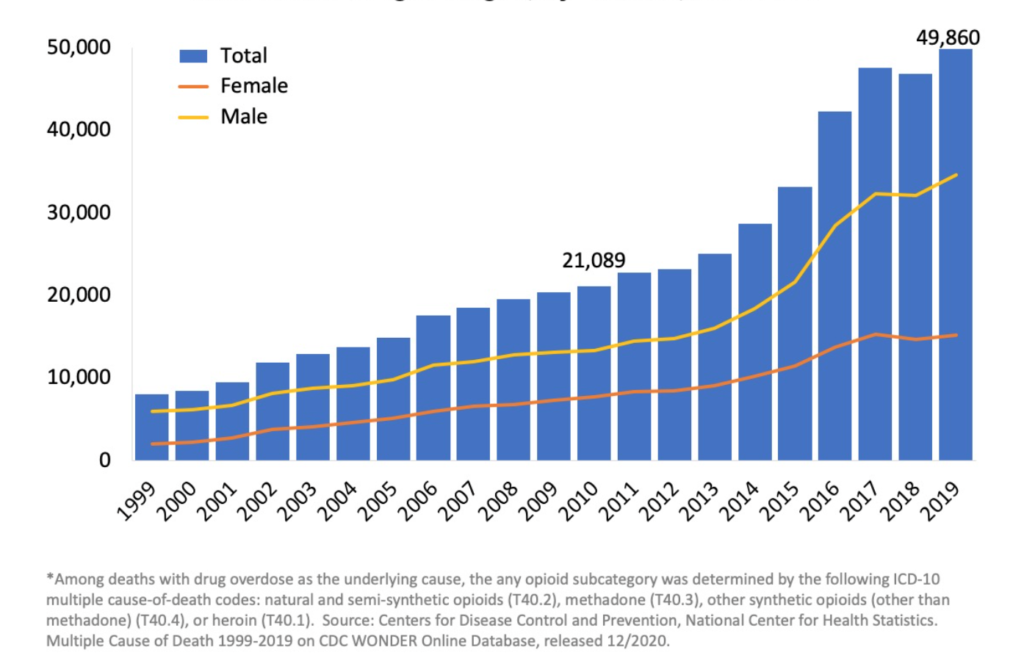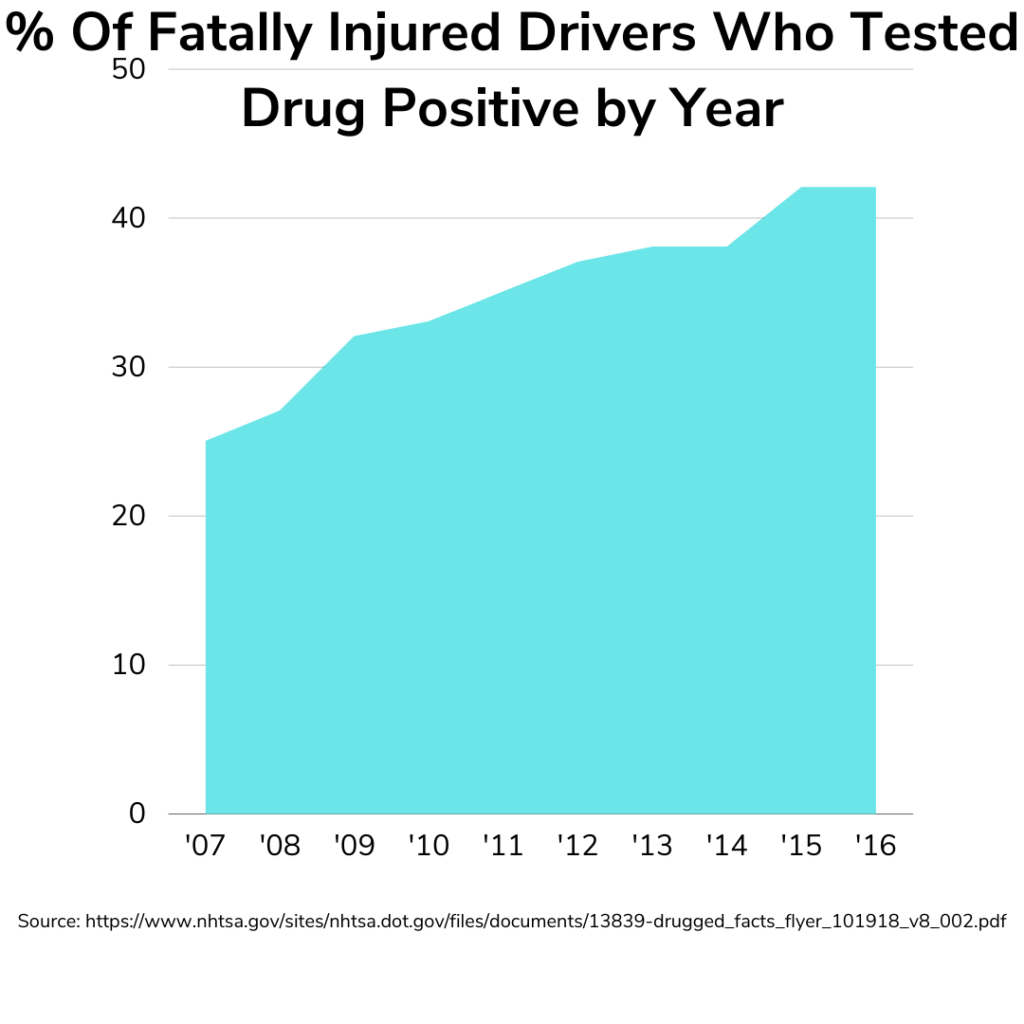
Gun Violence, An Opioid Epidemic, And The Increased Risk To Medical Professionals
By Charlotte Spencer
Last week, on March 22, 67-year-old Gregory Paul Ulrich made a virtual 10-minute appearance in front of a Minnesota judge, who ordered what’s called a “Rule 20 evaluation” to determine if Ulrich was mentally competent to stand trial.
On Feb. 9, Mr. Ulrich had opened fire on workers at Allina Health’s Buffalo Crossroads clinic in Minnesota, killing 37-year-old medical assistant Lindsay Overbay, a mother of two, and injuring four other people. Mr. Ulrich was a known offender, at least to law enforcement. In October 2018, according to reports, Mr. Ulrich had threatened to carry out a mass shooting at the clinic in Buffalo, a small city about 40 miles northwest of Minneapolis.
In the course of his February rampage, he had also placed pipe-bombs at the clinic. It was part of a larger trend in recent years of increased threats and attacks on healthcare workers, which has coincided with the rise of the opioid epidemic.

An investigator indicated that dependence on opioid medication was the “driving force” behind the Buffalo, Mn., incident.
According to investigators, Mr. Ulrich had a substantive opioid problem. In an unsealed application for a search warrant, Wright County Deputy Patrick Bailey reportedly stated that authorities had discovered a plastic bag containing six oxycodone pills while conducting a search of his hotel room. Bailey also reportedly described a video in which Mr. Ulrich mentioned taking more than 30 pills at a time.
A report in Minnesota Public Radio News (MPR News) quoted Bailey as writing this in the warrant application: “Ulrich has a dependency on opioid-style pain medications and was upset that his legal supply had been stopped.” The report added that Bailey cited a 2018 petition for a “harassment restraining order from Dr. Andrew Burgdorf that documents Ulrich’s history of opioid use.” The search warrant and affidavit confirmed that authorities believe this addiction to have been the motivating factor, according to documents obtained by KARE-11.
Mr. Ulrich was apparently prescribed opioid pain medication following back surgery in 2016 at a Minneapolis hospital. He was later hospitalized for an opioid overdose, and according to MPR News, medical professionals declined to prescribe more medication after “Ulrich made statements about mixing the opioids with alcohol.”
He was apparently well known to the police, having racked up several DWI arrests in the past several years. According to a report in the New York Post, he had at least 43 interactions with the police over the years. It was clear that he had a problem.
As Wright County Sheriff Sean Deringer stated at a press conference later on Feb. 9: “We have had several calls for service regarding Mr. Ulrich dating back to 2003 — both the Buffalo Police Department and the Wright County Sheriff’s Office, so he’s no stranger to law enforcement…”
Mr. Ulrich was apparently motivated, at least in part, by anger at the treatment of his back pain, according to court documents and a video message he left on his phone. As stated at a subsequent press conference on Feb. 11, and in the complaint against him, “A preliminary examination of the defendant’s cell phone recovered from the clinic revealed a recording made by the defendant consisting of a rambling video message that alluded to an incident at the clinic.”
He had also previously been in trouble for breaking a restraining order that clinic workers had against him. The details of Mr. Ulrich’s medical care and complaints during his previous time at the clinic are not publicly available due to strict laws regarding patient privacy, but multiple people in his life have reiterated that opioid abuse was an issue for him.
Part of a Pattern of Abuse
This attack was part of a larger pattern of threats, harassment, and violence that healthcare workers have faced. According to a recent poll by The American College of Emergency Physicians, 47% of ER doctors report having been assaulted on the job. In addition, 70% of ER nurses report having been hit or kicked on the job. Although not all of these attacks are the result of patients with drug problems, an alarming number of them are.
According to the Bureau of Labor Statistics, 20,790 workers in the private industry experienced trauma from nonfatal workplace violence just in 2018. Of those victims who experienced trauma from workplace violence:
- 71% were female
- 64% were aged 25 to 54
- An incredible 73% worked in the healthcare and social assistance industry
- 20% required 31 or more days away from work to recover, and 21% involved 3 to 5 days away from work
According to a December 2020 article in the American Journal of Managed Care (AJMC), “Currently, only 26 of 50 US states have any law to protect health care workers from assault, and the laws in the majority of these states protect only a small sector of the health care field. For example, penalties in Louisiana apply only to emergency department workers and those in Kansas apply only to mental health employees. In many states, the right to refuse treatment of abusive patients is allowed by law; however, under the Emergency Medical Treatment and Labor Act of 1986, emergency departments must treat all patients who present for care, regardless of abusive actions.”
Allina Health’s Buffalo Crossroads clinic is not an emergency room, but these statistics illustrate how dangerous the medical profession can be. This most recent attack demonstrates the risk that two different epidemics in our society, the opioid epidemic and mass shootings, can sometimes come together in the same incident. To make matters worse, health professionals face this increased threat at a time that they are also facing off against Covid-19.
According to the CDC, more than 70,000 Americans have died from a drug-involved overdose in 2019, including illicit drugs and prescription opioids.
National Overdose Deaths Involving Any Opioid — Number Among All Ages, by Gender, 1999-2019.

Recent attempts to crack down on opioid abuse have been long overdue, but may lead to more conflict in the short term, before helping the problem in the long term. Health professionals are often the people who frustrated patients lash out at as a result of the fact that they are the ones who these patients are face to face with. After years of lack of sufficient oversight, pill mills, manufacturers, and negligent pharmacies and prescribers are finally starting to face lawsuits and criminal charges.
At times this leaves health professionals, who have done nothing wrong, to face the wrath of patients who find doctor shopping — for someone willing to write a prescription — more difficult than they used to. In other cases, patients who are either intoxicated or in withdrawal can simply be more volatile and combative as a result. Though more rare, some also experience symptoms such as hallucinations due to opioid abuse, which can also lead to dangerous conflicts. Although a consistent crack down on over-prescribing will probably help the problem in the long run, it seems more is needed, legally and from a workplace safety perspective, to protect health professionals in the short run. Increased security seems in order given the shocking statistics regarding the violence that those in the health industry face.

Ongoing Litigation
As for this specific case, Ulrich is still working his way through the legal system. On March 22, as mentioned above, he appeared before the court (in a virtual hearing due to the Covid-19 pandemic). In addition to the defense attorney being granted a request for a Rule 20 mental competency evaluation, the prosecutor was granted his request for a DNA sample from Ulrich, along with a request to keep the victims’ information confidential.
All things being equal, it is clear that Ulrich will end up either in prison or in a treatment facility at this point, even though the legal case is still ongoing, because of how much evidence there is against him. A transcript of a conversation between Ulrich and a 911 operator that took place during his rampage recently became public. In it he freely admits that the bombs are his, saying “That was just another, uh, one of my last bombs.” He also clearly identifies himself on the call, and tells the operator that he has four bombs, a gun, and a knife. You can view press releases on this case as it proceeds on the Wright County’s official website.
This article is part of a larger series that Biometrica will be doing to take an in depth look at the public safety implications of the opioid epidemic. Follow us for more on this topic.
The writer is a lawyer and a coder, and a member of the Arizona Bar. If you have feedback on this article, please write to us at marketing@biometrica.com.